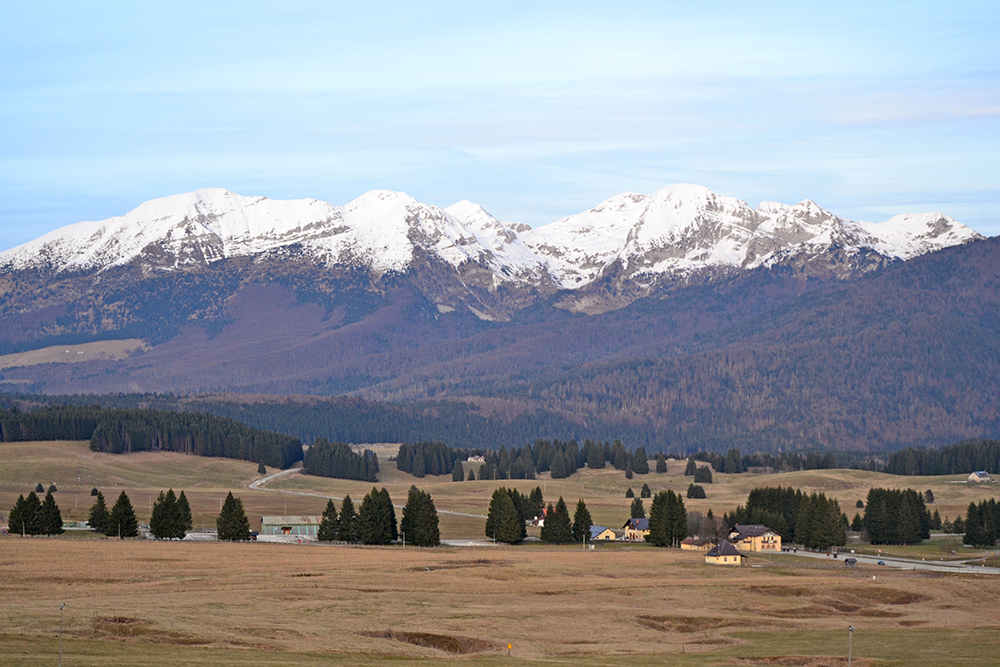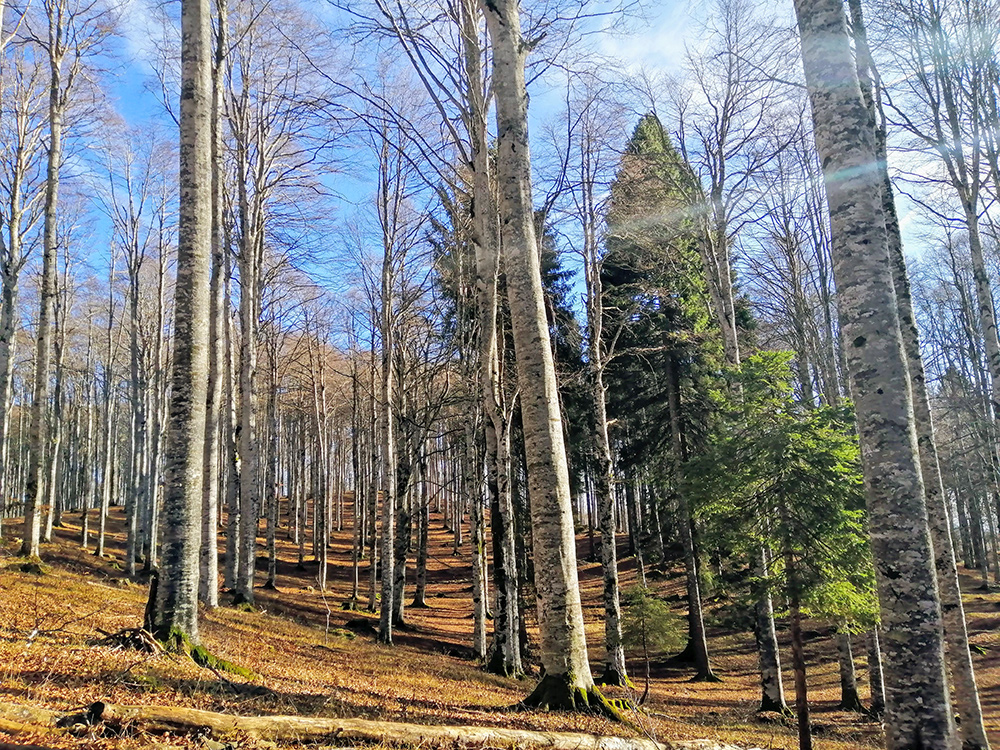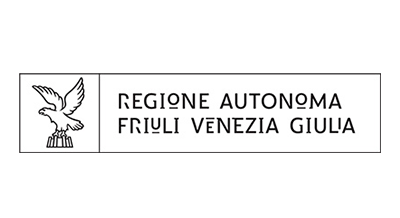 The Foresta Regionale del Cansiglio Orientale (Cansiglio Orientale Forest) has an area of more than 1500 ha and it is owned by the Friuli Venezia Giulia Region from 1966. The area extends in the municipalities of Caneva, Polcenigo and Budoia (PN), along the pre- Alpine ridge. Considering its surface, the Cansiglio Forest is one of the most important forest areas of the Region. The main land use is forest (98.6%) while the remaining 1.4% is grassland and pasture. The majority of the area is occupied by managed forests (beech, beech-fir, spruce and fir forests). However, not all the area is managed with productive purposes: the 17.7% (274.67 ha) has been designated for nature conservation and converted into strict forest reserves where no harvesting activities take place. Since the area is part of the State property, all hunting activities are forbidden.
The Foresta Regionale del Cansiglio Orientale (Cansiglio Orientale Forest) has an area of more than 1500 ha and it is owned by the Friuli Venezia Giulia Region from 1966. The area extends in the municipalities of Caneva, Polcenigo and Budoia (PN), along the pre- Alpine ridge. Considering its surface, the Cansiglio Forest is one of the most important forest areas of the Region. The main land use is forest (98.6%) while the remaining 1.4% is grassland and pasture. The majority of the area is occupied by managed forests (beech, beech-fir, spruce and fir forests). However, not all the area is managed with productive purposes: the 17.7% (274.67 ha) has been designated for nature conservation and converted into strict forest reserves where no harvesting activities take place. Since the area is part of the State property, all hunting activities are forbidden.

Considering its significant size the Cansiglio Orientale Forest represents a rare example of well conserved managed Alpine forest in Italy. Its geographical location contributes to its uniqueness, since it is in a zone of transition between the Alpine region (at the north) and the lowland-continental region (at the south) and thus it represents one of the southern sites of distribution of typical boreal species (e.g. Lepus timidus, Tetrao urogallus, Tetrao tetrix). Furthermore, Cansiglio Orientale Forest borders on the Illyrian region, thus it is also an area of transition between the Balkan and the lowland-continental regions, as it has been evidenced by the recent observation of Strix uralensis. From the botanic point of view, the relevance and value of the area is highlighted by the presence of more than 200 species of lichens and mosses, including Lobaria pulmonaria, Lobaria scrobiculata and Buxbaumia viridis. The abundance of these rare and threatened species are proof that the area has been managed in a sustainable way for centuries. Thanks to the sustainable forest management and continuous forest cover, nowadays the Cansiglio area hosts one of the most important lichen populations of the South-Western Alps.
Thanks to its position and extent this forest ensures the preservation of an ecological network, supporting the connectivity of several protected areas such as: IT3230047 “Lago di Santa Croce”, IT3230025 “Gruppo del Visentin a Faverghera - M. Cor”, IT3311001 “Magredi di Pordenone” and IT3310004 “Forra del Torrente Cellina”). Moreover, the “Foresta del Cansiglio” hosts three natural reserves, preserved as wilderness areas: “Croseraz-Val Bona” Strict Natural Reserve (223 ha), “Col Piova” Strict Natural Reserve (37.59 ha) and “Pian delle Stele” Strict Natural Reserve (22 ha). Hence, the Saproxylic habitat network, resulting from the present project, will favour species movement between the wilderness areas.
The University Forest Sailershausen comprises 2.176 ha and partially overlaps with the protected areas “Wässernachtal FFH DE5928371” (430 ha) and “Mainaue zwischen Eltmann und Haßfurt FFH DE5929372 (73 ha) and SPA DE5929471 (144 ha)”.
It is predominantly located in the growth district 4.1 Northern Franconian Plate, only 10% is located in the growth district 4.2 Southern Franconian Plate. It lies between 100 and 420 m above sea level on the colline (south) to submontane (north) stage.
The annual precipitation is 627 - 707 mm, the average temperature is 8 - 9°C.
The geological source rock is on the predominant area the Upper Muschelkalk, followed by the Lower Keuper.
It is a managed beech-oak forest with a large variety of broadleaf tree species and about 25% of conifers. Historically the forest had been managed as coppice-with-standards. Since the middle of the 18th century it has been converted to high forests and since 1910 especially to more productive conifer plantations. In 1958 the conifers reached a share of 49%. More recently the broadleaf trees increased again.
This type of broadleaf mixed forests is widely distributed in the planar zone of Central Europe. Due to the high diversity in tree and shrub species and some history with old pasture trees these forests serve a main habitat for many endangered species related to dead wood habitats. Moreover the combination of natural forest habitats and extensive hay meadows provide an excellent landscape for those species using inflorescences for mating or foraging, as many longhorn beetles.
Species listed for the FFH area “Wässernachtal” are Austropotamobius torrentium and Cottus gobio both colonizing the rivers and creeks in the area. Species related to the forest habitats listed in the area description are the bats Barbastella barbastellus, Myotis bechsteinii and Myotis myotis. More over a number of highly important conservation species are recorded from the area, as the bat Myotis alcathoe, the Annex II92/43/EWG species Dendrocopus medius, picus canus and Ficedula albicollis. From the Natura 2000 saproxylic species Lucanus cervus is regularly reported, while Osmoderma eremita might be expected. A smaller part of the forest in the South is part of the FFH and SPA area “Mainaue zwischen Eltmann und Haßfurt” mainly with the focus on migrating birds along the river Main.
The ownership and the administration of the forest by the university guarantee a constant management during the entire project period and beyond.











